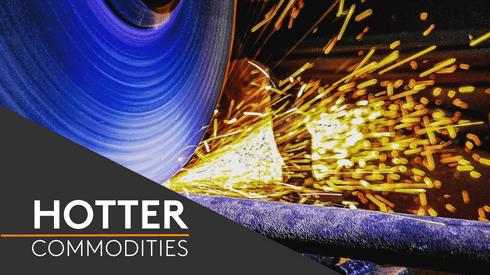The updated directive features guidelines for the collection of portable batteries (45% by 2023, 63% by 2027 and 73% by 2030) and for light means of transport batteries – a new category covering e-bikes and scooters – (51% by 2028 and 61% by 2031).
The legislation also sets minimum levels of materials recovered from waste batteries, with the target for lithium set at 50% by 2027, rising to 80% in 2031. Targets for cobalt, copper, lead and nickel have all been set at 90% by 2027, rising to 95% by 2031.
Like much of the battery industry, China currently leads metal recovery rates for recycling, with the country said to be five years ahead of regions like Europe and North America.
Research collated by Fastmarkets found that China’s recovery target in 2019 for lithium (85%), cobalt (98%) and nickel (98%) were all above those targeted by the EU for 2031.
The impetus to increase battery raw material (BRM) recycling and recovery rates has accelerated in recent years, particularly in light of increasing regulatory pressure, with Western economies aiming to onshore more of the supply chain and foster a more circular economy.
Participants, however, are concerned about how far behind Europe is lagging in both feedstock and infrastructure.
To address this, there have been a series of early-stage projects that seek to facilitate better BRM recovery in the region.
In May, UK-based Watercycle Technologies and precious metal recovery specialist RSBruce Metals & Machinery announced they had extracted commercial-grade lithium and almost 100% pure graphite from spent electric vehicle (EV) batteries.
A new lithium chemical refinery in Germany will use recycled feedstock for half of its capacity by 2030, according to the owner Livista Energy Europe.
More attention is being paid to the value of the these recycled raw materials, with Fastmarkets launching black mass payable assessments in May.
Fastmarkets assessed the black mass, NCM/NCA, payable indicator, cobalt, cif South Korea, % payable Fastmarkets’ standard-grade cobalt price (low-end) at 67-72% on June 14, narrowing upward from the 65-72% on June 7.
Fastmarkets assessed the black mass, NCM/NCA, payable indicator, nickel, cif South Korea, % London Metal Exchange cash official price at 67-72% on Wednesday, narrowing upward from 65-72% the week before
Lithium is a particular focus in the new circular economy legislation, according to European Parliament rapporteur Achille Variati.
“Our overall aim is to build a stronger EU recycling industry, particularly for lithium, and a competitive industrial sector as a whole, which is crucial in the coming decades for our continent’s energy transition and strategic autonomy,” he said.
The European Union’s updated legislation mandates that waste from batteries should be collected free of charge for all end users, regardless of their nature, chemical composition, condition, brand or origin.
It also targets carbon footprint reporting, with EV batteries, light means of transport batteries and rechargeable industrial batteries (with a capacity of over 2kWh) required to carry a label that reflects their carbon footprint.
Fastmarkets has reported that this may require significant progress in some markets, including high-purity manganese metal –used for the production of nickel-manganese-cobalt lithium-ion batteries – for which carbon emissions reporting standards appear to be mostly lacking.
Diligence obligations will also be placed on battery manufacturers, meaning they will have to comply with requirements addressing social and environmental risks around the sourcing, processing and trading of raw materials and secondary raw materials.
Additionally, minimum levels of recovered cobalt (16%), lead (85%), lithium (6%) and nickel (6%) from manufacturing and consumer waste must be reused in new batteries.
Keep up to date with global market insights and predictions for 2023 and beyond with our NewGen forecasts.






